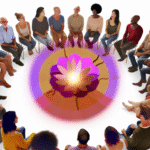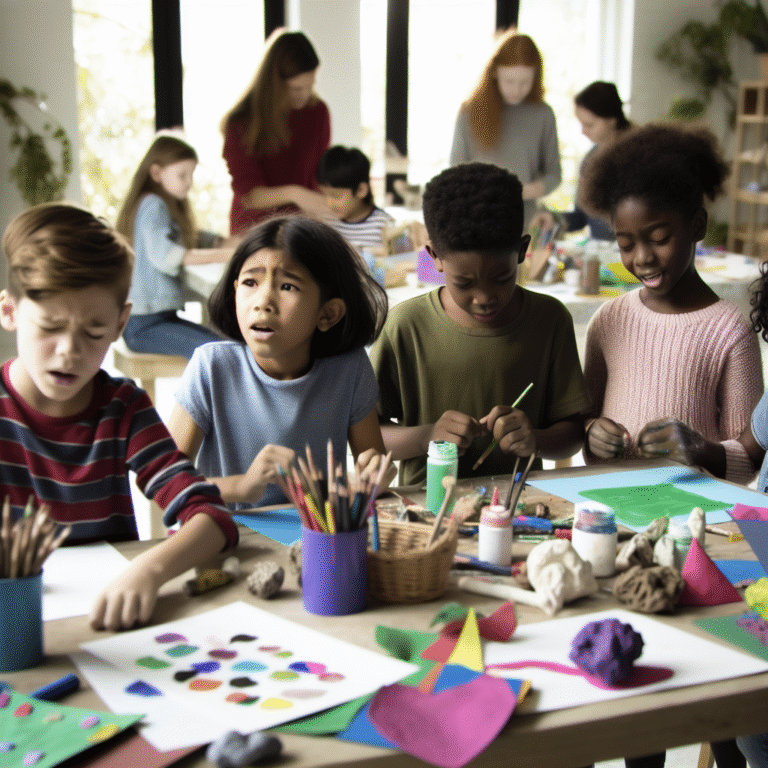
Bridging the Gap: Mastering Communication Skills for a Stronger Relationship
Introduction
In the intricate dance of relationships, effective communication is not merely a skill; it is the heartbeat that keeps connections alive. Whether you’re nurturing a romantic relationship, fostering a friendship, or strengthening family ties, the ability to communicate effectively can mean the difference between harmony and conflict. In this article, we will explore the theme "Bridging the Gap: Mastering Communication Skills for a Stronger Relationship," delving into unique insights, actionable strategies, and real-world case studies to enrich your relationships while enhancing your interpersonal communication skills.
The Power of Communication in Relationships
To understand the essence of bridging the gap in communication, we first need to recognize its power. Communication allows individuals to express their thoughts, feelings, and needs. It brings clarity, fosters understanding, and builds intimacy. Let’s examine some vital statistics related to relationships and communication:
| Statistic | Percentage |
|---|---|
| Marriages that end in divorce due to poor communication | 65% |
| Individuals who feel unsatisfied with their relationships due to miscommunication | 70% |
| Relationships that improve after implementing effective communication strategies | 75% |
These statistics highlight a crucial truth: the stakes are high when it comes to communication. Bridging the Gap: Mastering Communication Skills for a Stronger Relationship not only improves existing dynamics but also provides tools to prevent potential conflicts from escalating.
Understanding Communication Styles
The Four Primary Communication Styles
- Passive: Avoiding conflict and often disregarding personal feelings and needs.
- Aggressive: Expressing opinions in a confrontational way, disregarding the feelings of others.
- Passive-Aggressive: Indirect resentment and annoyance rather than direct confrontation.
- Assertive: Expressing personal rights and boundaries calmly and respectfully.
Case Study: The Johnsons
The Johnsons, a couple experiencing constant arguments, discovered through counseling that they were engaging in a mix of aggressive and passive-aggressive communication styles. After identifying their patterns, they worked towards assertive communication. They began expressing their feelings directly and respectfully, which significantly improved their relationship.
Recognizing Your Style
Understanding your communication style is essential in bridging the gap. Reflect on your past conversations—do you often feel unheard? Are you quick to react? Acknowledging your tendencies can help you adopt more effective strategies.
Active Listening: The Cornerstone of Effective Communication
What is Active Listening?
Active listening goes beyond hearing words; it involves fully engaging with the speaker. This means giving your undivided attention, acknowledging what’s being said, and responding thoughtfully.
Steps to Practice Active Listening:
- Maintain Eye Contact: Show you’re engaged.
- Use Verbal Affirmations: Simple responses like "I see" or "Go on" encourage openness.
- Reflect Back: Paraphrase what the speaker has said to ensure understanding.
- Avoid Interrupting: Allow the speaker to finish their thoughts.
Case Study: The Smiths
In a study of the Smiths, a couple that struggled with constant misunderstandings, implementing active listening techniques transformed their interactions. As they practiced reflecting back what they heard, they discovered nuances in each other’s messages that they had previously overlooked, significantly reducing arguments.
Non-Verbal Communication: Beyond Words
The Hidden Language of Body Language
Did you know that up to 93% of communication is non-verbal? Our body language, facial expressions, and tone of voice convey messages just as powerfully as our spoken words.
| Component | Percentage of Communication |
|---|---|
| Body Language | 55% |
| Tone of Voice | 38% |
| Words | 7% |
Recognizing Non-Verbal Cues
Non-verbal communication can either reinforce or contradict verbal messages. To bridge the gap effectively, pay attention to these cues:
- Posture: Open vs. closed posture can indicate engagement or defensiveness.
- Facial Expressions: Emotions can be conveyed without a word.
- Gestures: Simple hand movements can add emphasis or clarity.
Case Study: The Parkers
The Parkers found themselves in frequent disagreements. They learned to recognize non-verbal signals—like crossed arms indicating discomfort. By addressing these cues, they created an environment where both felt heard, leading to deeper conversations and understanding.
The Importance of Empathy in Communication
What is Empathetic Communication?
Empathy is the ability to understand and share the feelings of another. In the context of relationships, it allows partners to navigate challenges with compassion.
How to Cultivate Empathy
- Practice Perspective-Taking: Try to see the situation from the other person’s viewpoint.
- Validate Feelings: Acknowledge the other person’s emotions, even if you don’t agree.
- Share Vulnerability: Opening up about your own feelings fosters a deeper connection.
Case Study: The Mendez Family
When the Mendez family faced struggles around family gatherings, they learned about empathetic communication. By sharing their feelings about the events and acknowledging each other’s emotions, they transformed their approach, creating gatherings that felt welcoming rather than stressful.
Conflict Resolution: Strategies for Success
Navigating Tough Conversations
Not all conversations will be easy. Learning to navigate conflict respectfully is essential to bridging the gap. Here are some strategies:
- Stay Calm: Take a few deep breaths before addressing conflict.
- Use ‘I’ Statements: Express your feelings using statements like "I feel" rather than "You never."
- Focus on the Issue: Avoid personal attacks; concentrate on resolving the specific situation.
Case Study: The Chen Couple
In one household, Jason and Mia Chen faced recurring disagreements about household chores. By utilizing ‘I’ statements and focusing on the problem rather than assigning blame, they could have productive discussions, turning potential arguments into collaborative solutions.
The Role of Time-Outs
Sometimes the best strategy is to take a break. This allows emotions to cool down, enabling more rational discussions later. Establish guidelines for time-outs to ensure both partners understand when it’s time to pause and when to return to the dialogue.
Building a Culture of Open Communication
Cultivating Spaces for Dialogue
Creating an environment where open communication is encouraged is crucial for successful relationships. Here are strategies for fostering this culture:
- Regular Check-ins: Schedule time to discuss feelings, thoughts, and changes in each other’s lives.
- Create Safe Spaces: Foster an atmosphere where both parties feel comfortable sharing without fear of judgment.
- Promote Honesty: Encourage transparency even when conversations are tough.
Case Study: The Alberts
The Albert couple made it a habit to schedule regular "relationship check-ins." This practice not only improved their communication skills but also strengthened their bond as they discussed both the positives and areas for improvement.
Conclusion
When it comes to relationships, the ability to communicate effectively is unparalleled. By bridging the gap through mastering communication skills, you can foster deeper connections, navigate challenges seamlessly, and ultimately strengthen your relationships. Each strategy discussed in this article not only serves to improve your interactions but also equips you with valuable tools to nurture your connection with others.
Actionable Insights
- Commit to practicing active listening in your next conversation.
- Identify your communication style and experiment with assertiveness.
- Schedule regular dialogue sessions with your partner or loved ones.
Communication is a lifelong journey, full of opportunities for growth and connection. Embrace it, and watch your relationships flourish.
FAQs
1. What are common barriers to effective communication in relationships?
Barriers include misunderstandings, assumptions, emotional triggers, and lack of active listening. Identifying these barriers can help in resolving issues.
2. How can I improve my active listening skills?
Practice focusing completely on the speaker, avoid interrupting, and reflect on what they say before responding.
3. What role does body language play in communication?
Body language often conveys more than words. It can reflect emotions, reinforce verbal messages, or even contradict what is said.
4. How can empathy enhance communication?
Empathy fosters deeper understanding and validation of emotions, leading to healthier dialogue and conflict resolution.
5. What should I do if my partner is not open to communication?
Encourage a safe environment for dialogue, and express your feelings about the lack of communication. Sometimes, seeking the help of a professional can also provide guidance.
By understanding and implementing these skills, you pave the way for not just a stronger relationship, but a fulfilling one that brings joy and satisfaction to both parties involved. So, take this journey today—bridging the gap starts with you!















